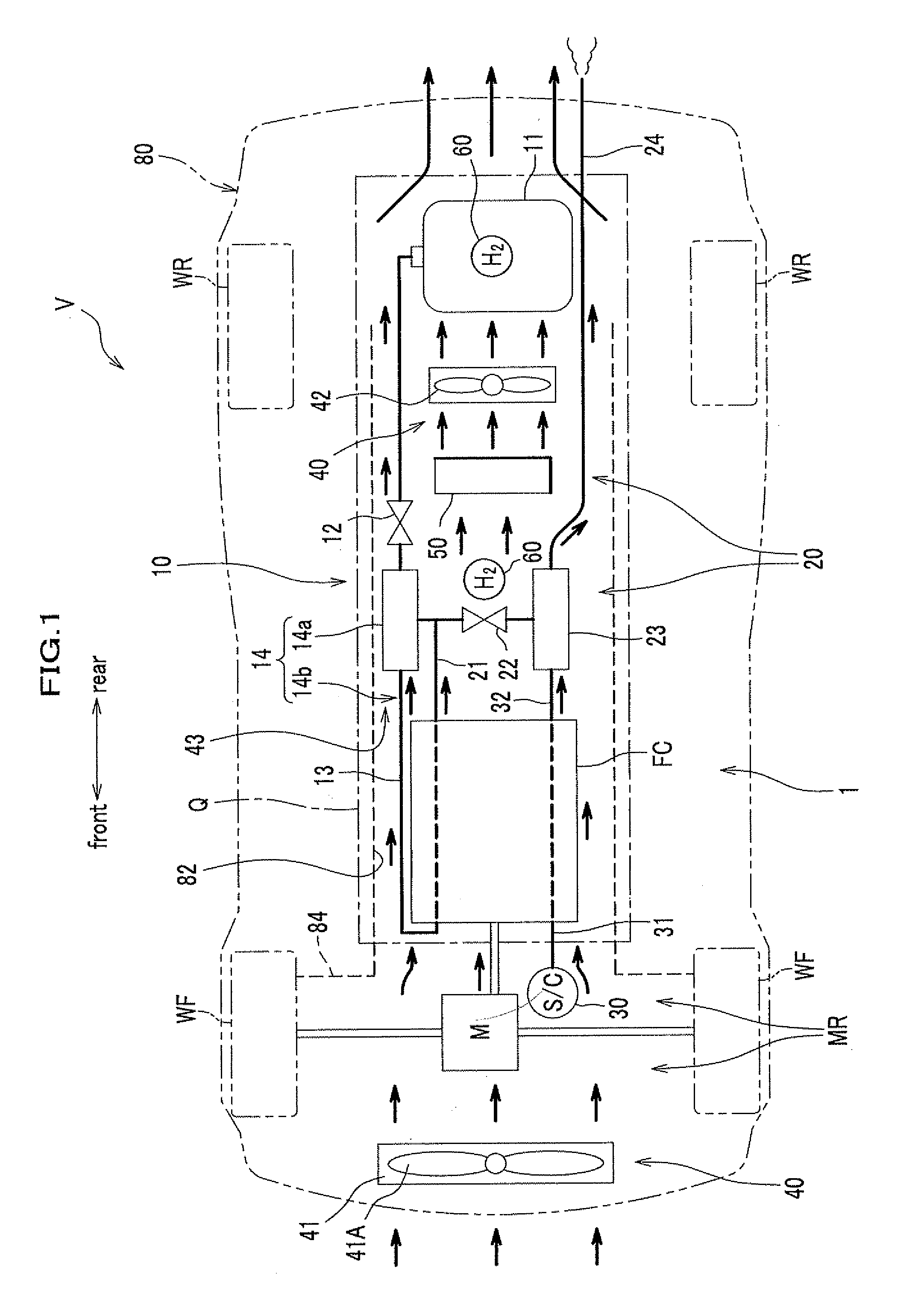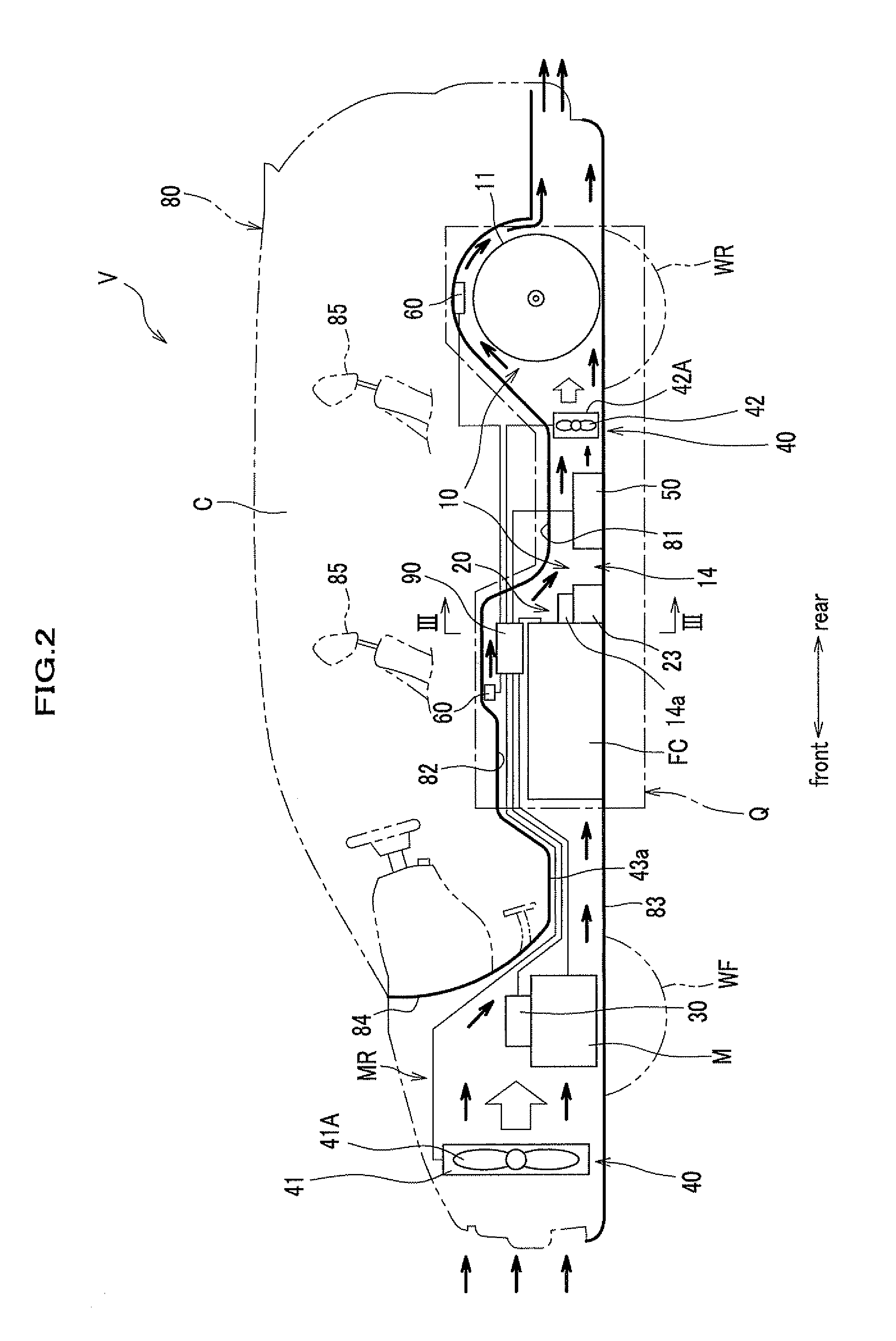Ventilator of a fuel-cell vehicle
a fuel-cell vehicle and ventilator technology, applied in the direction of cell components, electrochemical generators, cell component details, etc., can solve the problem of large suction device, achieve the effect of improving the cooling performance and improving the ventilating performan
- Summary
- Abstract
- Description
- Claims
- Application Information
AI Technical Summary
Benefits of technology
Problems solved by technology
Method used
Image
Examples
Embodiment Construction
[0022]A ventilator of the fuel-cell vehicle relating to an embodiment of the present invention will be described as referred to FIG. 1 to FIG. 3.
[0023]FIG. 1 is a schematic plan view showing a constitution of the ventilator of the fuel-cell vehicle relating to this embodiment. FIG. 2 is a schematic side view showing a constitution of the ventilator of the fuel-cell vehicle relating to the embodiment of the present invention. FIG. 3 is an enlarged cross-sectional view taken along a line III-III of FIG. 2. In addition, FIG. 1 to FIG. 3 show schematically and exaggeratedly the hydrogen-system unit area Q arranging a fuel cell FC and the like, and the ventilating channel 43.
Constitution of the Fuel-Cell Vehicles
[0024]As shown in FIG. 1, the fuel-cell vehicle V is an electric vehicle driven by rotating the driving motor M by means of the power generation of the fuel cell FC. The fuel-cell vehicle V boards the fuel-cell power generator 1, which is provided with the below-describing fuel c...
PUM
 Login to View More
Login to View More Abstract
Description
Claims
Application Information
 Login to View More
Login to View More - R&D
- Intellectual Property
- Life Sciences
- Materials
- Tech Scout
- Unparalleled Data Quality
- Higher Quality Content
- 60% Fewer Hallucinations
Browse by: Latest US Patents, China's latest patents, Technical Efficacy Thesaurus, Application Domain, Technology Topic, Popular Technical Reports.
© 2025 PatSnap. All rights reserved.Legal|Privacy policy|Modern Slavery Act Transparency Statement|Sitemap|About US| Contact US: help@patsnap.com



